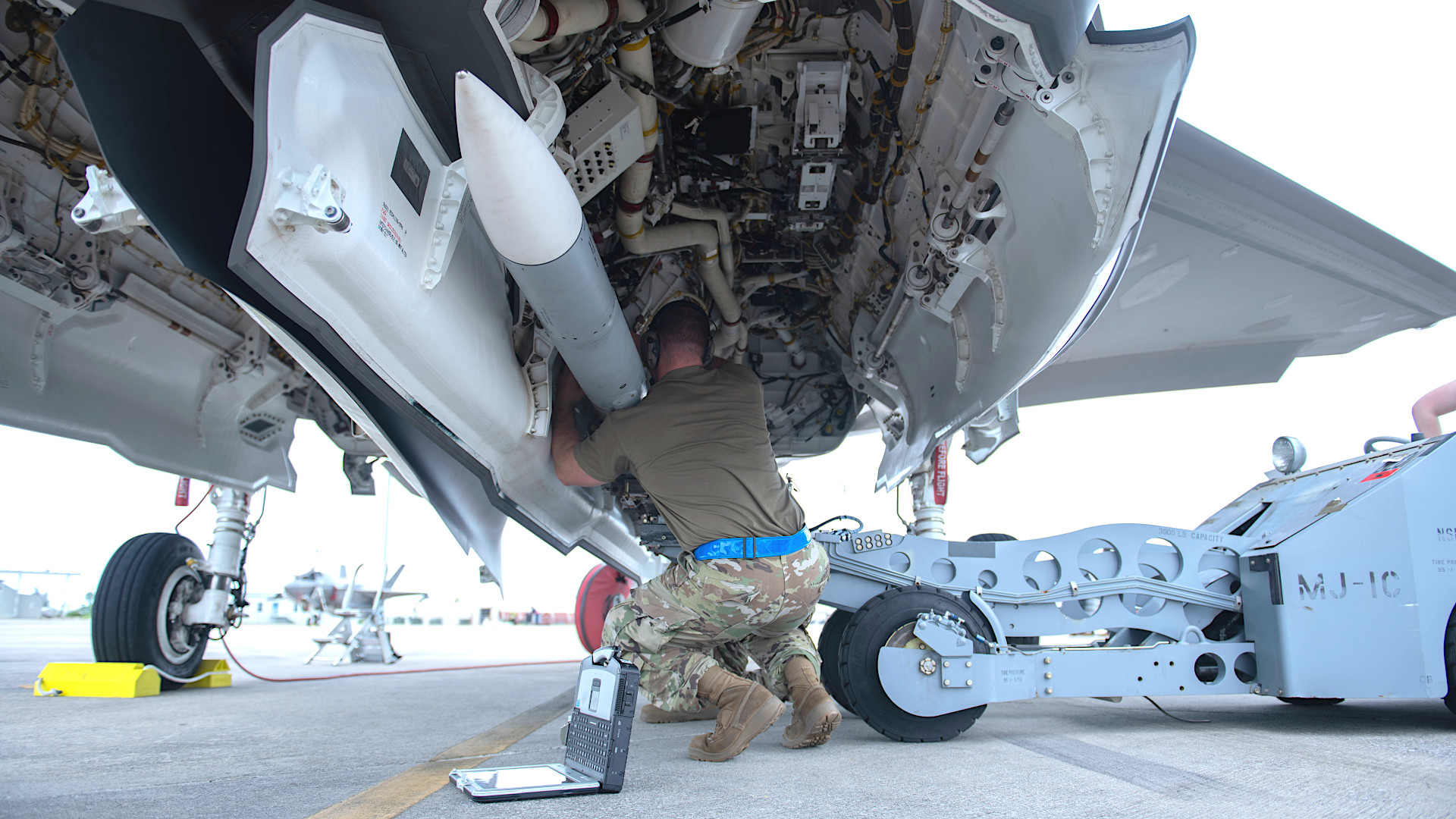The U.S. Navy is interested in acquiring a relatively low-cost and compact air-launched stand-off anti-ship weapon, four of which could be carried internally by certain variants of the F-35 stealth fighter. The U.S. Air Force has also laid out its own requirements for a similar-sounding air-launched munition, but that is geared toward more general air-to-ground strike missions.
Naval Air Systems Command put out a contracting notice for what it is currently calling the Multi-Mission Affordable Capacity Effector weapon system, or MACE, on February 2. This followed the Direct Attack Contracting Division of the Air Force life Cycle Management Center’s Armament Directorate (AFLCMC/EBDK) issuing a separate notice about what it has dubbed the Extended Range Attack Munition (ERAM) on January 30.
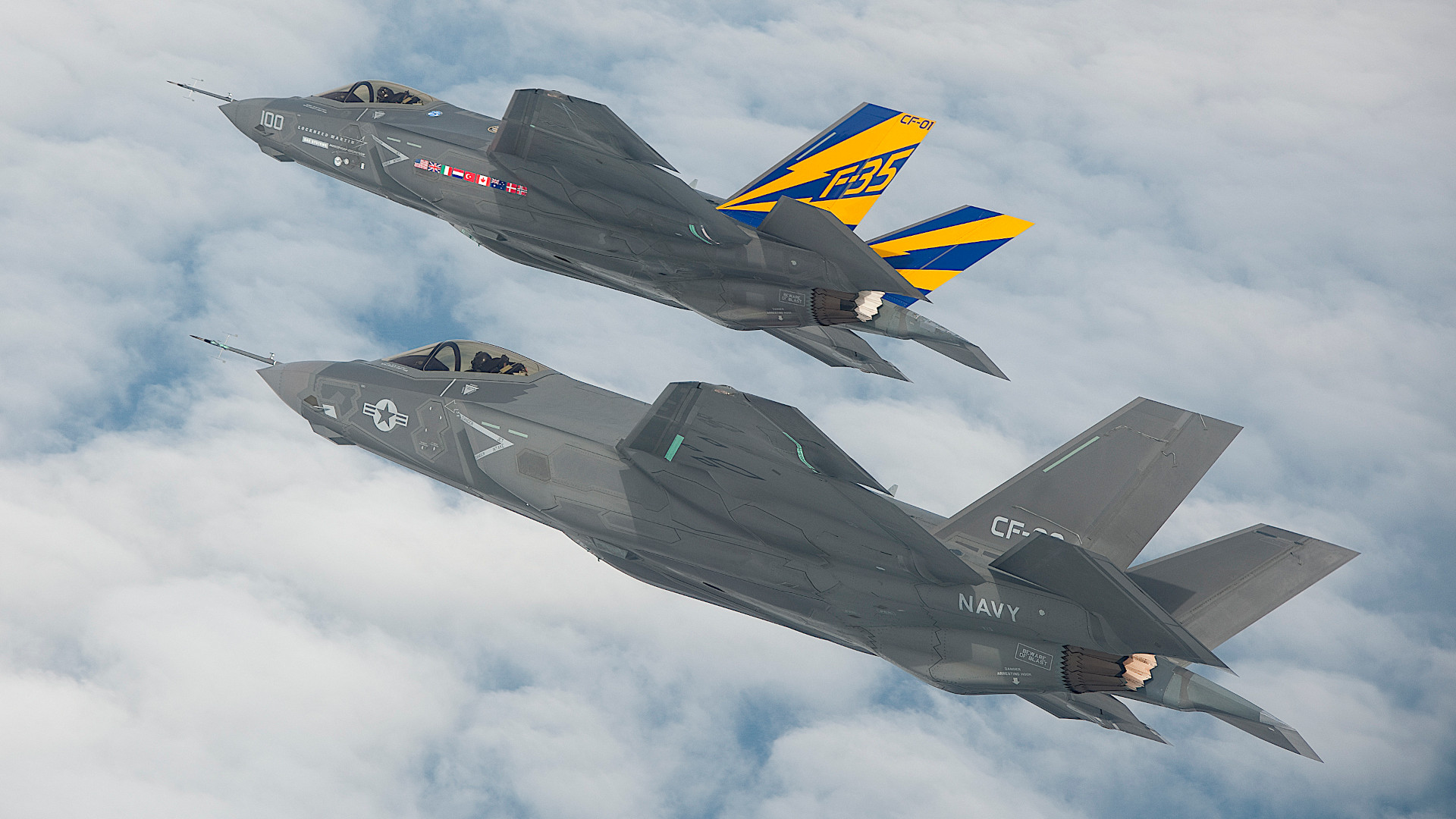
“The USN [U.S. Navy] requires the rapid development, prototyping and fielding of an air-launched weapon with adequate stand-off ranges to provide desired lethality without exposing manned platforms to significant survivability risks and jeopardizing mission effectiveness,” the MACE notice explains. So “Naval Air Systems Command … is conducting market research to determine if there are any responsible sources that have the capability, experience and facilities required to support the rapid development, maturation, integration, prototyping, test, qualification and initial fielding of prototype units in support of” this effort.
The requirements NAVAIR has laid out publicly for MACE include an equivalent range to the AGM-158C-1.1 Long Range Anti-Ship Missile (LRASM) when released from an aircraft flying at a speed of Mach 0.8 at an altitude of 30,000 feet above sea level. The AGM-158C-1.1’s maximum range is classified, but publicly available information says that it is similar, if not identical to that of the AGM-158A Joint Air-to-Surface Standoff Missile (JASSM) land-attack cruise missile, which publicly available information says is between 200 and 300 miles. LRASM is derived from JASSM, and you can read more about the former in detail here.

The Navy also wants MACE to “incorporate a guidance system that detects and targets moving surface combatants and surface targets” and have a 75-pound warhead.
The MACE weapon needs to work with the F/A-18E/F Super Hornet as the threshold launch platform. However, NAVAIR’s requirements also say the design should be sized from the beginning so that four of them will fit inside the internal bays on F-35A or F-35C Joint Strike Fighters. The bays on the short takeoff and vertical landing F-35B variant are smaller than those on the A and C versions, which imposes unique limitations on the ordnance those jets can carry internally.
LRASM and JASSM are both set to be integrated onto at least some F-35 variants, but they are too big to be carried internally by any version of the Joint Strike Fighter. Externally-carried stores have negative impact on the low observable (stealthy) qualities of the F-35.

Work is being done to add other air-launched cruise missiles to the arsenals of different versions of the F-35, such as the U.S.-Norwegian Joint Strike Missile (JSM) and the Select Precision Effects At Range Capability 3 (SPEAR 3) from the British division of European missile conglomerate MBDA. However, these existing efforts involve missiles that are either still too big (like JSM) to meet the MACE’s demand internal load out four weapons in total or are too small (like SPEAR 3) to meet other key requirements.
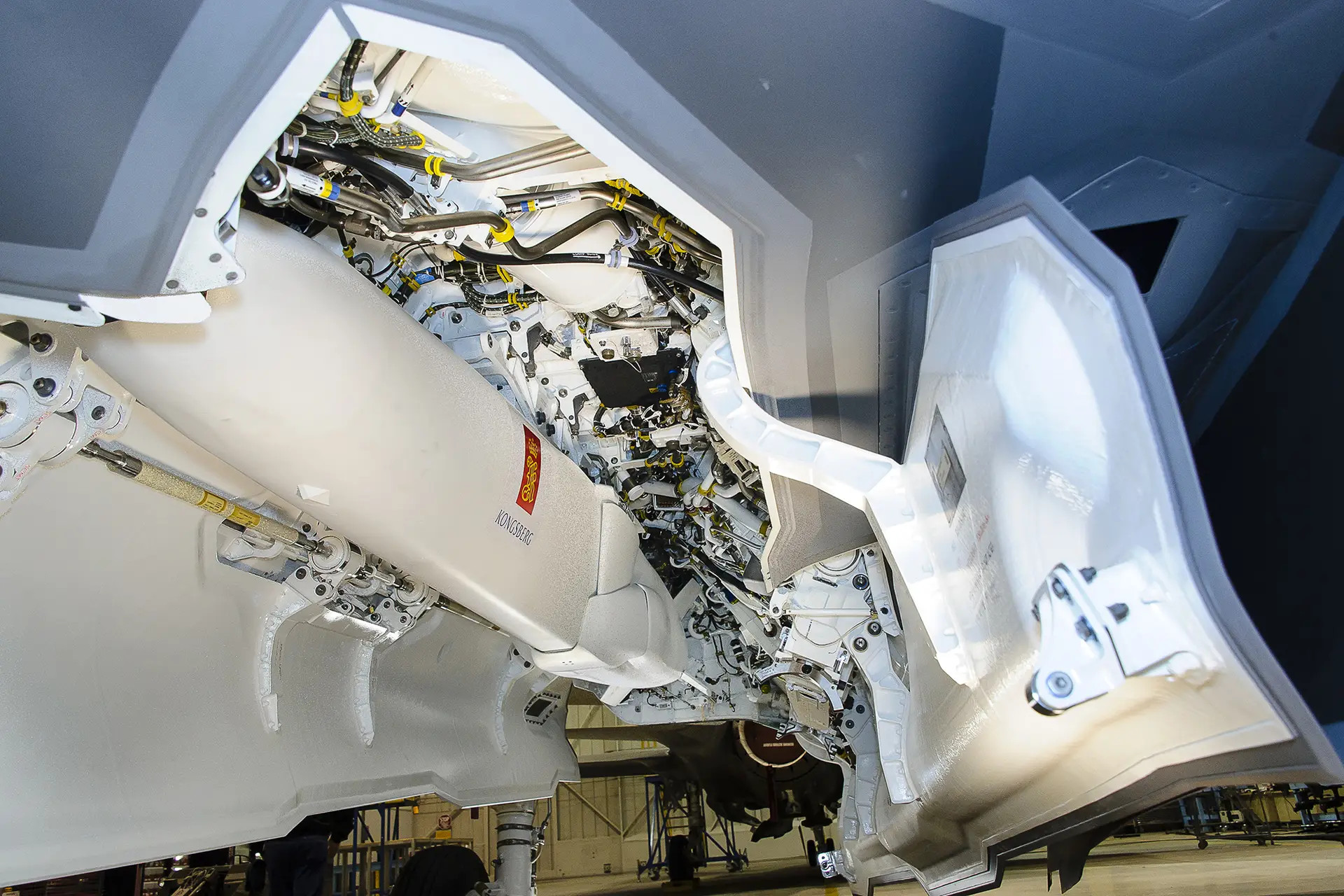

In addition, “designing for F-35A/C internal-carriage will expand partnership and cost-sharing opportunities,” NAVAIR notes, a nod to steadily growing international F-35 operator base. The sizing requirements for internal carriage on F-35A/C will also “immediately maximize stores-carriage on F/A-18E/F.” F-35A/C fighters could carry additional MACEs externally.
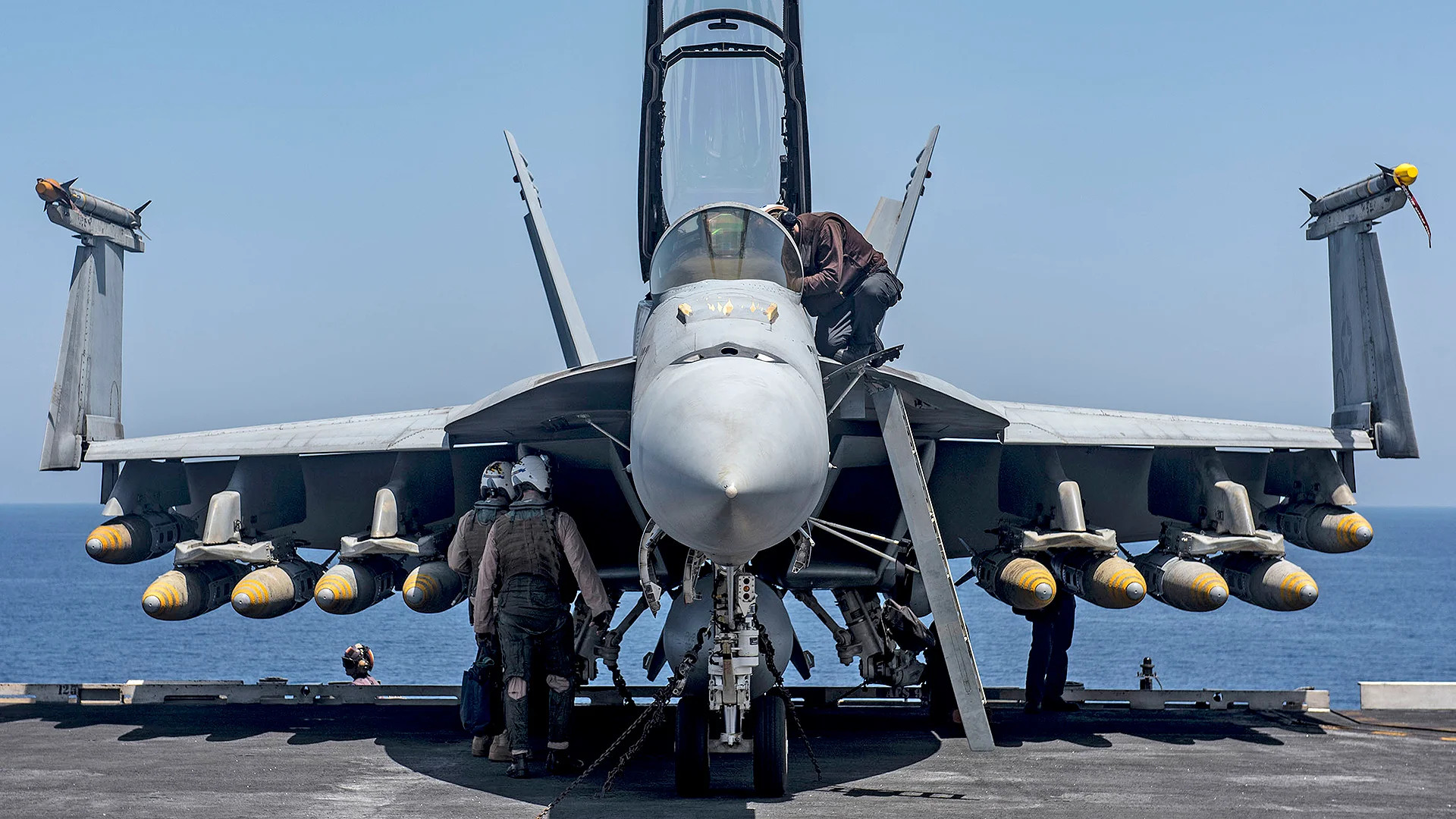
Overall, the MACE munition as described sounds like a miniature anti-ship cruise missile. It’s interesting to note that NAVAIR’s notice about this munition comes as the Navy is looking to acquire an extended-range version of the full-size LRASM, called the AGM-158C-3. It also just recently emerged that the service has nixed its original plans to add land-attack capability onto the C-3 variant.
The Navy’s goal is for each MACE to cost less than $300,000 and for the manufacturer to be able to make at least 500 of them a year. For comparison, AGM-158C-1 LRASMs and subvariants thereof cost around $3 million apiece and maximum annual production rate is 120 missiles, according to Navy budget documents.
“MACE will achieve increased range at lower costs by leveraging investments by the Department of Defense (DoD) Science and Technology enterprise and industry partners to integrate a high-maturity propulsion system with proven payloads that are designed with a high quantity production mindset,” according to NAVAIR. The notice also calls for an open-architecture design to help speed up the development of future upgrades and new variants.
The Air Force’s ERAM concept, at least as it has been described so far, is very similar, if geared toward a different target set. AFLCMC/EBDK’s contracting notice calls for a 500-pound-class munition with a range of at least 250 miles and a top speed of no less than Mach 0.6. The size of the munition’s warhead isn’t specified, but it needs to be a blast/fragmentation type with at least some degree of penetrating capability and unspecified variable fuze settings.

The ERAM’s internal navigation system has to be “capable of operating in a GPS degraded environment.” The weapon also needs to have a “terminal Accuracy” of “CEP 50 w/in 10m” (meaning the weapon hits within 10 meters, or around 33 feet, of the specified impact point at least 50 percent of the time) in “both in non-EMI (Electromagnetic Interference) and high EMI environments (includes GPS degraded).”
The Air Force hasn’t provided a public cost target for ERAM so far, but say the goal is for the manufacturer to be able to churn out at least a 1,000 of them within two years of getting a contract. This would equate to average annual production rate of no less than 500 munitions, just like the Navy has specified for MACE.
As the Navy’s MACE contracting notice makes clear, fielding smaller, but still capable stand-off munitions can have significant operational benefits. Helping F-35s carry more munitions internally gives them more firepower while operating in the most stealthy mode. Non-stealthy tactical jets, like the F/A-18E/F, can also carry these weapons and likely in significant numbers given their size and weight. All of this translates to more striking power for individual aircraft per sortie.
Against warships, something like MACE could be less survivable, on an individual basis, as well as less capable of causing significant damage. At the same time, the higher volume of missiles would help overwhelm shipboard defenses, which is a significant concern facing modern navies as The War Zone recently explored in detail the context of the Navy’s future Constellation class frigates. A single smaller missile could still very capable when employed against a smaller warship and the combined damage from many of them scoring hits on larger vessels could be substantial. Even one hit could cause a mission kill, putting critical weapons and sensors out of action, making the ship vulnerable to follow-on attacks in the near term, and put out of action for a prolonged period of time in the longer term.
MACE and ERAM both could also be employed en masse by larger aircraft, such as Air Force bombers. Compact cruise missiles might be particularly well suited for launching in high volumes from more novel platforms, as well, like cargo planes turned into weapons trucks using the Air Force’s Rapid Dragon system. Though JASSM has been the payload most associated with Rapid Dragon to date, a palletized munitions test that directly preceded that program involved a munition called the Cargo Launch Expendable Air Vehicles with Extended Range (CLEAVER) about which little remains known.


However, the bigger undercurrent to both MACE and ERAM is the need to find a way to significantly and quickly expand stand-off strike capacity and stockpiles of relevant munition, but also do so at a sustainable cost. Planning around a potential high-end conflict against China in the Pacific is currently a major driver behind this demand. In the opening phases of any such fight, U.S. forces would be called upon to prosecute many thousands of targets across a vast area in a short amount of time. Those same forces would have to be capable of continued sustained strike operations afterward while dealing with attrition, contested logistics, and other factors.
MACE and ERAM are hardly the first examples of U.S. military programs seeking different kinds of mini-cruise missiles and other low-cost stand-off precision-guided munitions. The U.S. Air Force spent did significant research and development on weapons in this category, including actual flight tests, as part of a project called Gray Wolf between 2017 and 2020. That effort also explored networking munitions together, something that evolved into a different program called Golden Horde.
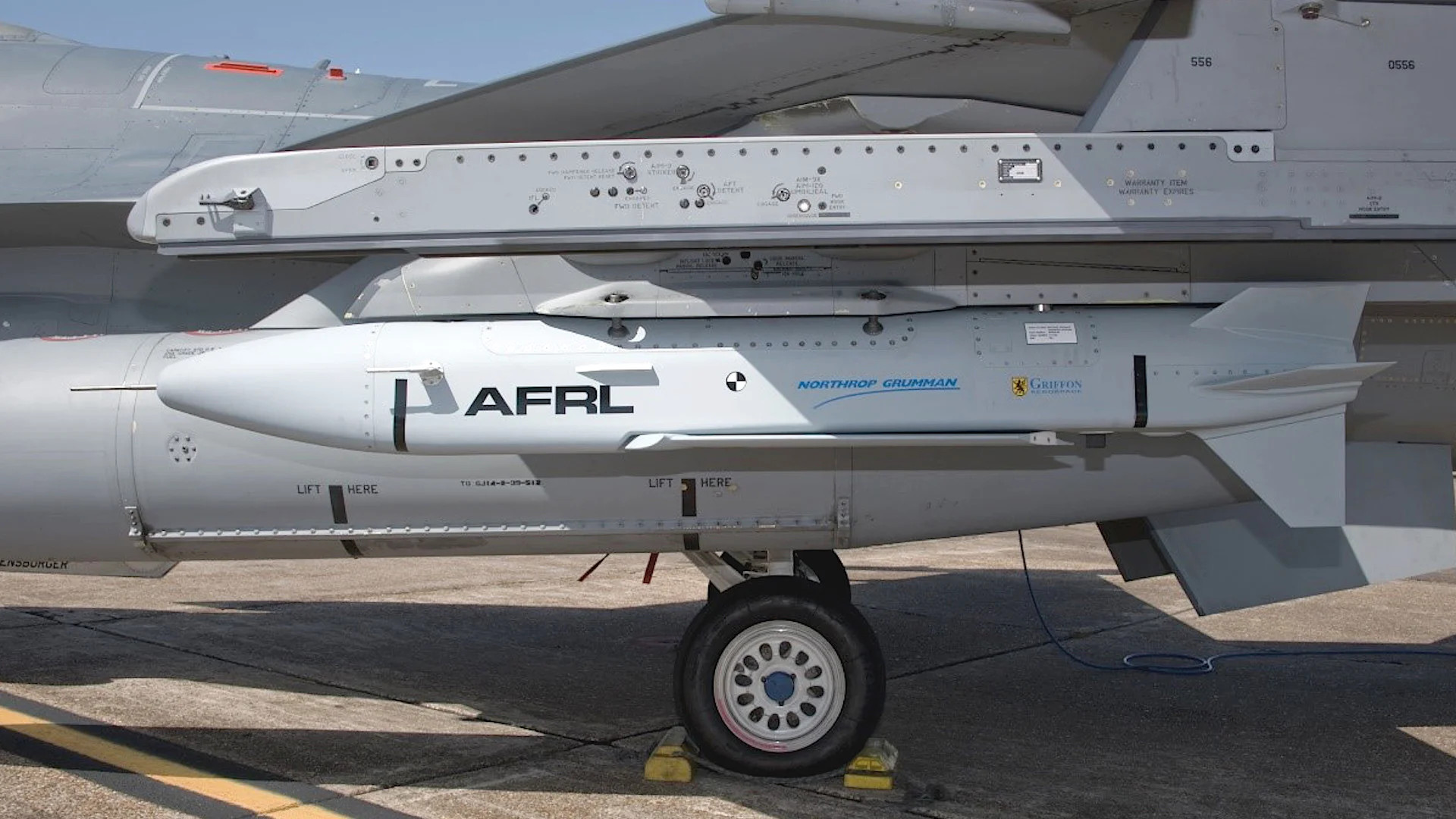
In 2021, U.S. Special Operations Command (SOCOM) outlined its own requirements for an air-launched mini-cruise missile with a range of at least 200 miles, as you can read more about here.
Private companies have seen this growing demand have been doing work internally, too. Boeing’s Powered Joint Direct Attack Munition (PJDAM) is just one prime example that meets many of the stated MACE and ERAM requirements already. It has a range of at least 300 nautical miles and a modular design that can use any standard 500-pound class ‘dumb’ bomb as its warhead. Boeing says it has enough spare electrical power to support “optional enhancements” like “seekers, data link, [and] other mission avionics.”

On top of the development of new munitions, there has been and continues to be considerable investment in new and improved design and manufacturing concepts to help accelerate production of advanced weapon systems and keep costs low. This is notably central focus of Lockheed Martin’s Skunk Work’s Speed Racer air-launched drone program. Rapid design and manufacturing is also a key element of General Atomics’ recently disclosed Advanced Air-Launched Effects (A2LE) drone project, which The War Zone was first to report on.

These are all exactly the kinds of things that the MACE contracting notice is likely referring to when it talks about at least leveraging existing work to help speed up development and keep costs low. ERAM could benefit from these same research and development efforts.
It does remain to be seen how the Navy’s MACE and Air Force’s ERAM efforts will actually progress. In both cases, squeezing the desired capabilities into suitably small and low cost packages, and ones that can be produced at high volume relatively quickly, could present technical and supply chain challenges.
At the same time, the demand for low-cost mini-cruise anti-ship and land-attack missiles, including types small enough to be carried internally by stealth fighters like the F-35, is clearly not going away. If anything, the U.S. military’s efforts to prepare for a future high-end conflict, especially one in the Pacific against China, have added new impetus for the development and acquisition of weapons like MACE and ERAM.
Contact the author: joe@twz.com
